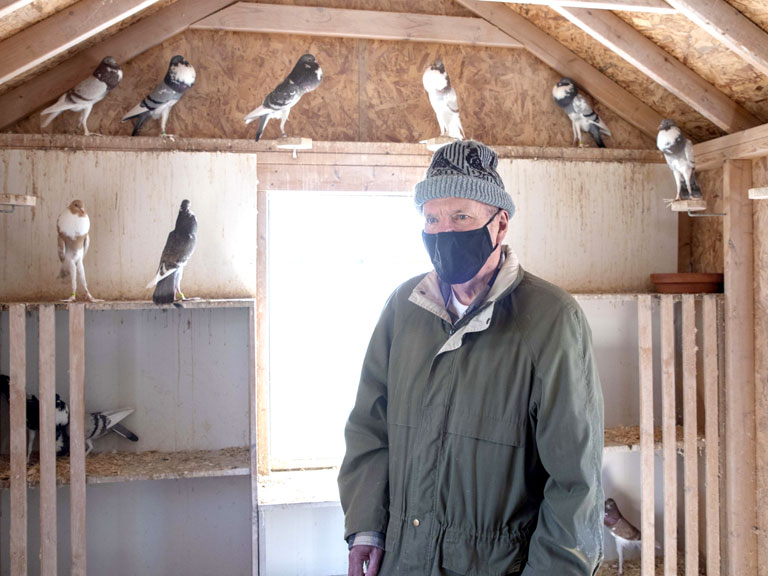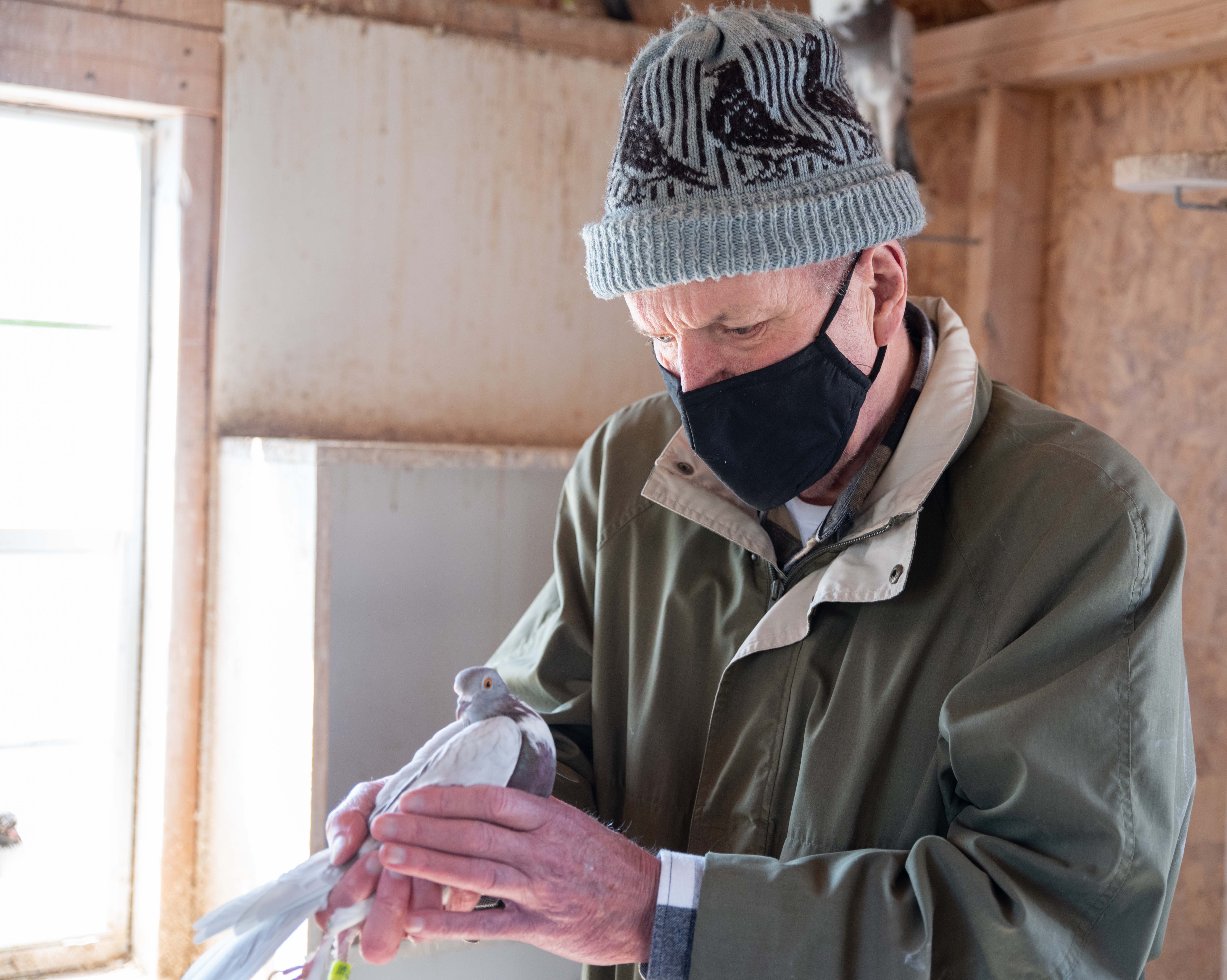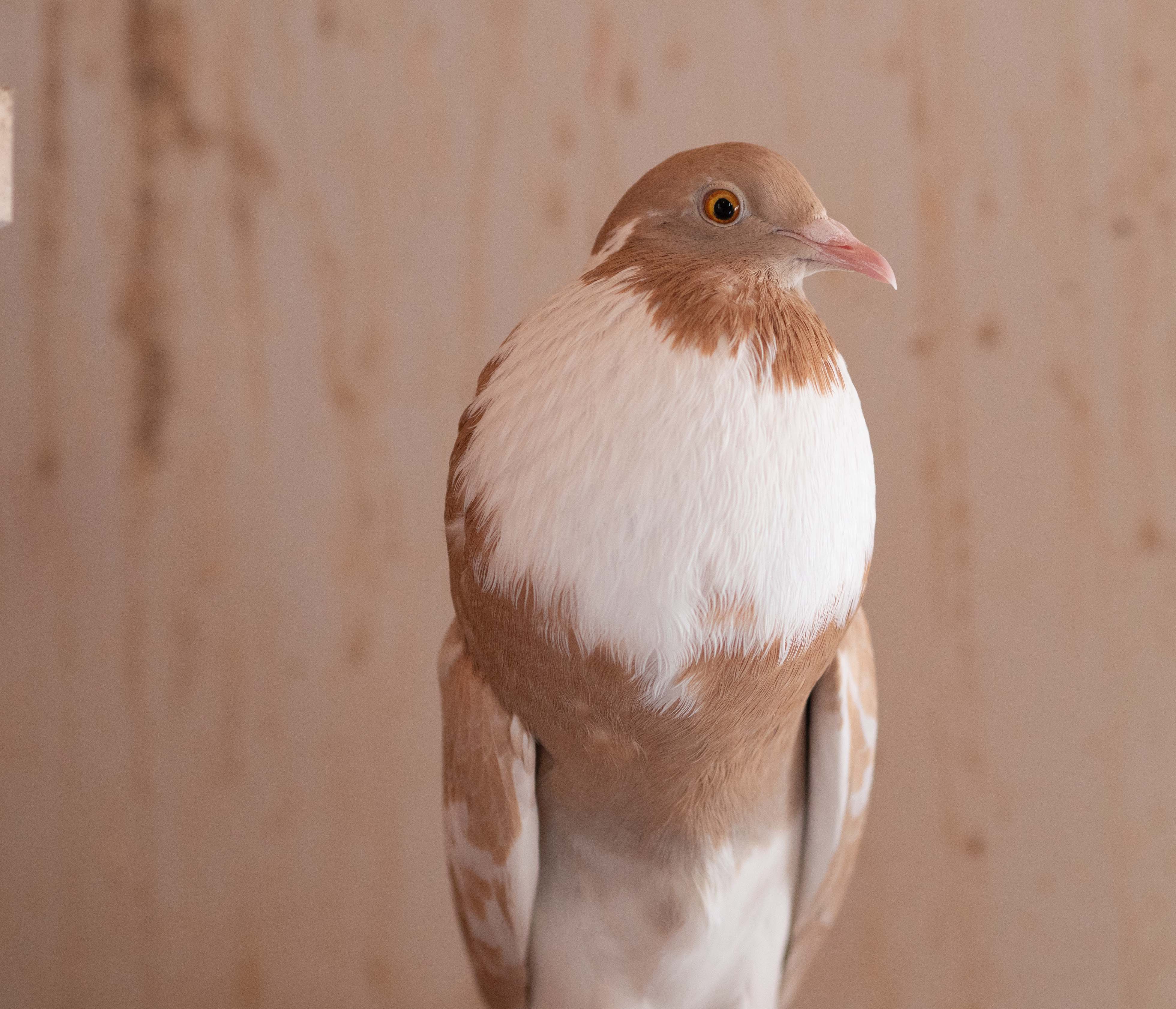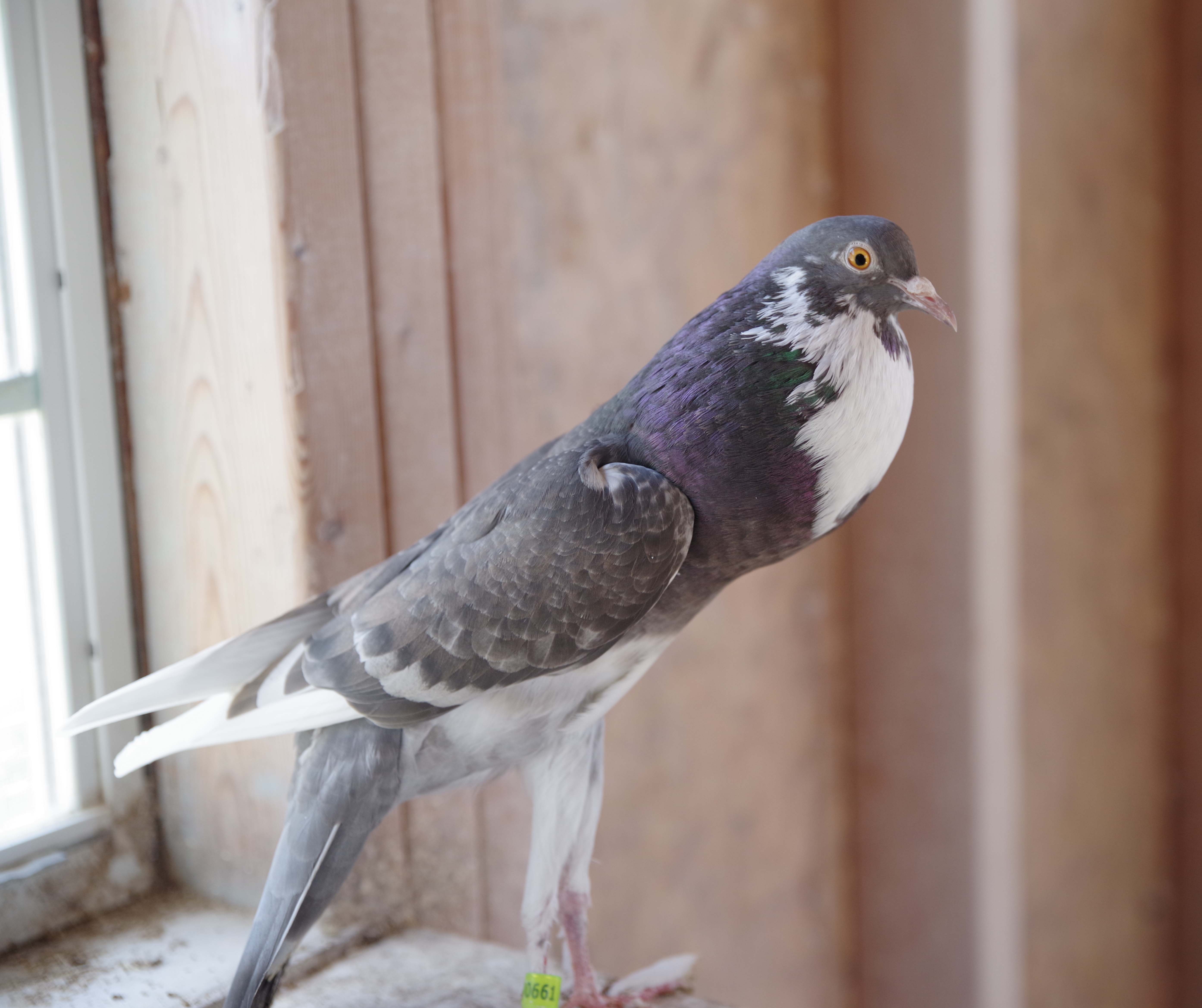County News
Fancy birds

Raising pigmy pouter pigeons for fun
The sound of contented cooing changes into a flutter of wings as David Stuckey opens the door to the loft containing his pigmy pouter pigeons. The birds have only a passing resemblance to their feral kin, in that the head and beak look similar, as does the colouration. But these birds are much sleeker, with long, almost spindly, legs. What sets them apart, however, is their long neck and feather covered air sac. The birds almost always keep the air sac inflated, puffing out the neck area so that it is bigger than their chest. “They can put it down and relax, but they don’t care to. I think they think they look good, and they like looking good,” says Stuckey with a laugh. He first started raising birds when he was about 11 or 12, and continued to do so until his early twenties. He had to give up raising birds when he started working full time, as his job kept him on the move. So about 20 years ago when he retired, he dusted off his pigeon books that he kept all that time and got into raising birds again.
Pigmy pouter pigeons are an offshoot from pouter pigeons that were bred in England in the 1800s. Stuckey’s brood are just a bit over half the size of their ancient forebears, and he keeps them because he says they are fine looking birds. “They’re just beautiful, I think. They’re not bred for meat, not bred for homing, they’re just made to make the world more beautiful,” he says. “These guys are especially interesting, because they don’t want to raise their own babies. They will not sit on their eggs and they won’t feed their babies.” He has another loft where he keeps the foster parents. When his pigmy pouters lay their eggs, he will find foster parents who have also recently laid eggs and swap them out. The new parents will dutifully sit on the eggs until they hatch, and then rear the foster chicks. Stuckey takes an active role in raising the chicks as well, feeding them and handling them so they become used to his presence. One of the things that he likes to do is to have a young chick running on the palm of his hand as he shows the newcomer to his wife, Pat.
He typically raises his birds to sell to other pigeon enthusiasts, and says that it’s easy for him to find buyers. Last year he sold all of his “babies” to a buyer from Quebec. He’s had no newborns since then, because a large raccoon somehow got into his foster loft and killed all the birds. “I had a whole loft full of fantails in there, and they used to raise the babies for me. Well, this great big raccoon got in and killed every single one. It almost made me quit keeping birds. I was heartbroken, and it took me quite a while to get over it. I just got in some new foster parents in the last week or two, so I’m going to try again this year.” His new foster birds are Horseman pouters—and they are good parents—that he got from a fellow fancier in Belleville. “Pigeon guys are like that. If you need something, somebody will give it to you.”
The ongoing pandemic has meant there are no big shows, or even informal backyard ones where a few breeders will get together and socialize. Three years ago, one of his birds was named best pouter and reserve champion at the Eastern Ontario Open show in Belleville. He says there are over 300 different breeds of fancy pigeons, each with distinctive characteristics, and it has been an enjoyable and learning experience for him. He sees the birds as his friends, and takes gentle care of them, and he says simply, “It’s fun.”





Comments (0)